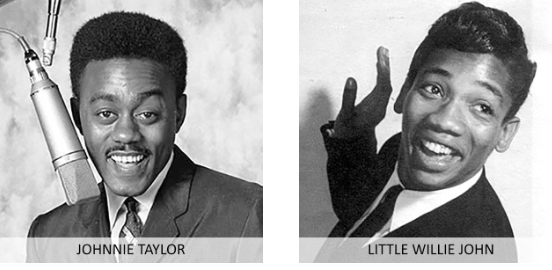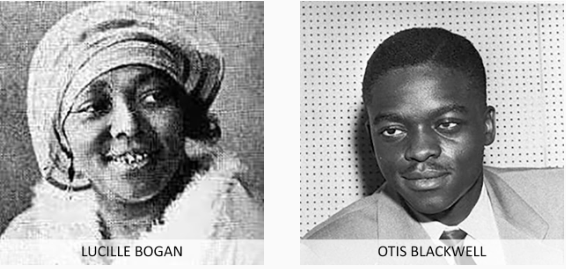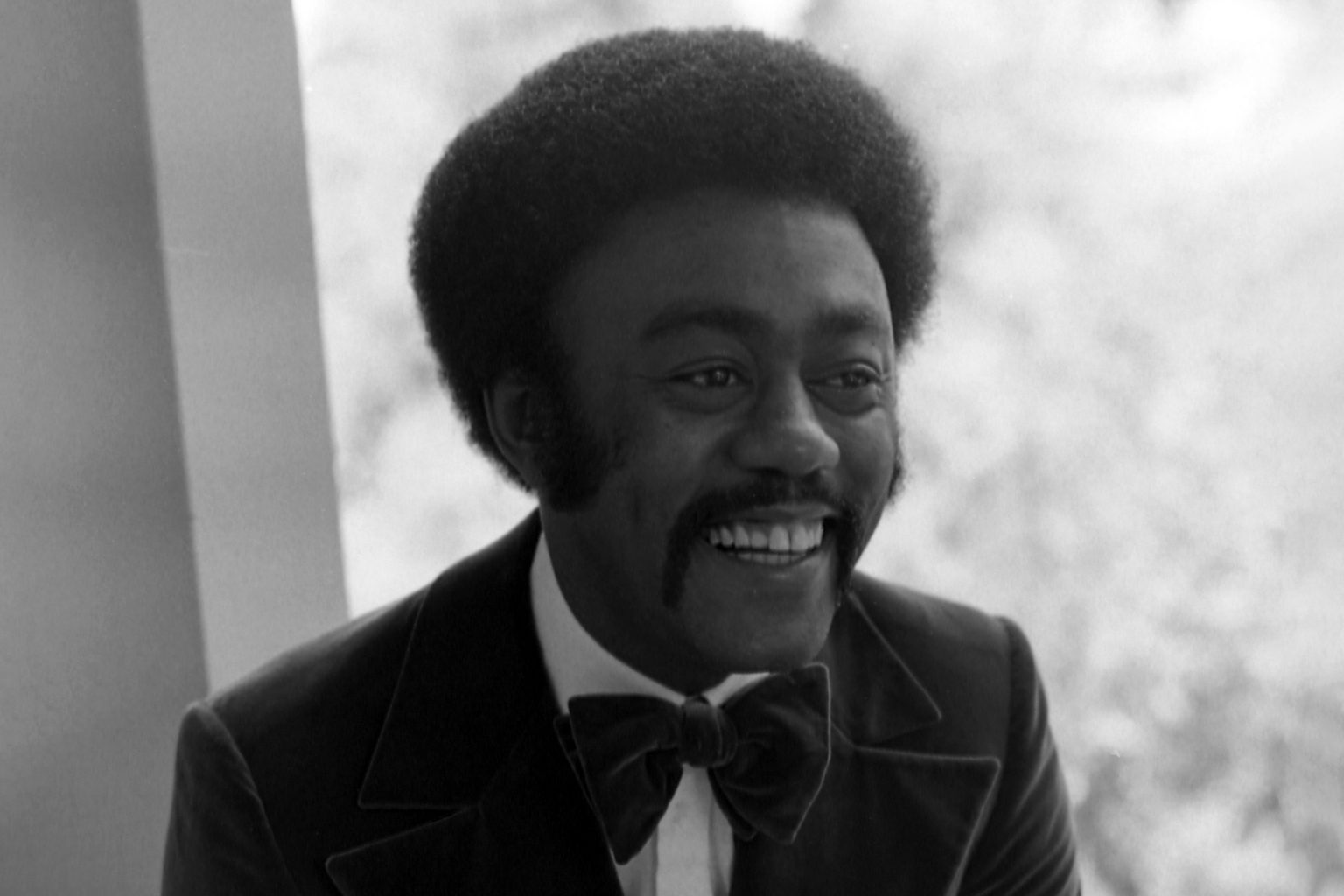The 12 honorees of The Blues Foundation’s Blues Hall of Fame’s 42nd class encompass over 70 years of music, spanning from Lucille Bogan in the 1920s & 1930s, Little Willie John in the 1950s & 1960s, and Johnnie Taylor from the 1950s through the 1990s. This year’s inductees in the Blues Hall of Fame’s five categories — Performers, Non-Performing Individuals, Classics of Blues Literature, Classics of Blues Recording (Single), and Classics of Blues Recording (Album) — demonstrate how the blues intersects with a wide variety of American music styles: soul, blues, R&B, and rock’ n’ roll.

The new Blues Hall of Fame performers aren’t just exceptional musicians, but they also are educators, innovators, entrepreneurs, and activists determined to leave their mark on the world.
Lucille Bogan recorded some of the most memorable songs of the pre-World War II era, recording from 1923-1935 for Okeh, Paramount, Brunswick, Banner, Melotone, and other labels. Her songs were covered by B.B. King, John Lee “Sonny Boy” Williamson, Jimmy Rogers, Memphis Minnie, and others, but she became more well known for the controversial themes her music embodied. Little Willie John was a soul, blues, and rock ‘n’ roll star whose meteoric rise and tragic fall ended when at age 30 he died in prison. Labeled as a “singer’s singer” by none other than B.B. King, this blues and ballad vocalist extraordinaire had his first national hit while still a teenager. Ten of his records crossed over to the pop charts, which landed him three appearances on Dick Clark’s American Bandstand. Johnnie Taylor spent his early years as a solo performer singing gospel, although his first recording was as a member of the doo-wop group, The Five Echoes. While signed to Stax from 1966-1974, he recorded his breakthrough single “Who’s Making Love.” His next biggest hit came with the 1976 platinum-selling “Disco Lady.” Later, Taylor took his gospel-influenced blues, soul, and funk to Malaco, where he found a new home for his music until the end.
While he never met Elvis Presley, Otis Blackwell is best known for writing Presley’s massive hits, “Don’t Be Cruel,” “All Shook Up,” and “Return To Sender.” He’s also credited as writing “Breathless” and “Great Balls of Fire” for Jerry Lee Lewis as well as the Little Willie John/Peggy Lee hit, “Fever.” He recorded for RCA Victor, the Jay-Dee label, and others but avoided the limelight finding his niche in songwriting. Mary Katherine Aldin has spent the past 60 years behind the scenes in the blues and folk music worlds, as a voice on the radio and as compiler or annotator of blues and folk reissue albums for Rhino, Vanguard, MCA/Chess, Columbia, and other labels. She was nominated for a GRAMMY® for her liner notes for The Chess Box by Muddy Waters. Aldin also served in various editorial positions at Living Blues, Blues & Rhythm, and others and secured publishing rights for artists at Folklore Productions. She was inducted into the Folk DJ Hall of Fame in 2018 and is still broadcasting for KPFK’s “Roots Music & Beyond.”
Bo Diddley’s Bo Diddley is 2022’s Classic of Blues Recording: Album, which compiled 12 of his groundbreaking singles on Chess Records’ Checker subsidiary. There are five Classic of Blues Recording: Singles receiving Hall of Fame induction: Sonny Boy Williamson II’s 1951 single “Eyesight to the Blind” the first release by the master harmonica player and singer, Bobby “Blue” Bland’s 1957 hit “Farther Up the Road,” Roy Brown’s 1947 release “Good Rocking Tonight” hit No. 1 on the R&B charts when covered by Wynonie Harris, B.B. King’s “Rock Me Baby” released in 1964 was one of his biggest hits on the Billboard pop charts, and the exuberant “Rollin’ and Tumblin’” released in 1950 by the Baby Face Leroy Trio.
Entering the Blues Hall of Fame as a Classic of Blues Literature is Red River Blues: The Blues Tradition in the Southeast, written by British author Bruce Bastin and hailed as an acclaimed work of blues scholarship.

The Blues Foundation’s 2022 Blues Hall of Fame Inductees
Performers:
Lucille Bogan
Little Willie John
Johnnie Taylor
Individuals – Business, Production, Media, Academic:
Mary Katherine Aldin
Otis Blackwell
Classic of Blues Literature:
Red River Blues: The Blues Tradition in the Southeast by Bruce Bastin (University of Illinois Press, 1986)
Classic of Blues Recording – Album:
Bo Diddley – Bo Diddley (Chess/Checker Records, 1958)
Classics of Blues Recording – Single or Album Track:
“Eyesight to the Blind” – Sonny Boy Williamson II (Trumpet, 1951)
“Farther Up the Road” – Bobby “Blue” Bland (Duke, 1957)
“Good Rocking Tonight” – Roy Brown (DeLuxe, 1947)
“Rock Me Baby” B.B. King (Kent, c. 1964)
“Rollin’ and Tumblin’ “ – Baby Face Leroy Trio (Parkway, 1950)
Due to the global shutdown in 2020 that forced The Blues Foundation to cancel in-person fundraisers, the celebration of the 2020 Blues Hall of Fame Inductees will officially take place along with the 2022 ceremony. Honorees include Billy Branch, Eddie Boyd, Syl Johnson, Bettye LaVette, George “Harmonica” Smith, Victoria Spivey, Ralph Peer, and more.
The Blues Hall of Fame Induction Ceremony, held this year in conjunction with the Blues Music Awards and International Blues Challenge week, will occur on Wednesday, May 4, 2022, at the Halloran Centre (225 S. Main St., Memphis). A cocktail reception honoring the BHOF Inductees and Blues Music Awards nominees will begin at 5:30 p.m., with the formal inductions commencing at 6:30 p.m. in the Halloran Theater. Tickets, including the ceremony and reception, are $75 each and are available with Blues Music Awards tickets here.
Coinciding with the Induction Ceremony, The Blues Foundation’s Blues Hall of Fame Museum will showcase several special items representing the 2020 and 2022 class of inductees. These artifacts will be on display for public viewing beginning the first week of May and will remain on view for visitor enjoyment for the next 12 months.
The Blues Hall of Fame Museum, built through the ardent support and generosity of blues fans, embodies all four elements of The Blues Foundation’s mission: preserving blues heritage, celebrating blues recording and performance, expanding awareness of the blues genre, and ensuring the future of the music.
The museum’s current exhibit in the upstairs gallery features the work of music photographer Jérôme Brunet. This exhibition features blues legends and Blues Hall of Famers such as B.B. King, Robert Cray, Etta James, Mavis Staples, Honeyboy Edwards, and Johnny Winter to name just a few. Museum visitors can also explore the permanent exhibits and individualized galleries that showcase an unmatched selection of album covers, photographs, historical awards, unique art, musical instruments, costumes, and other one-of-a-kind memorabilia. In addition, interactive displays allow guests to hear the music, watch the videos, and read the stories about each of the Blues Hall of Fame’s over 400 inductees.
The museum will re-open in late April with amended hours that will be listed here. Admission is $10 for adults and $8 for students with I.D.; free for children 12 and younger and for Blues Foundation members. Membership is available for as a little as $25 per person; to join, visit www.blues.org. The Blues Foundation’s Blues Hall of Fame Museum is located at 421 South Main Street in Memphis, TN.
Blues Hall of Fame Inductee biographies and descriptions were
researched and written by Jim O’Neal (bluesoterica.com)
The Blues Foundation’s partners and sponsors include ArtsMemphis, Tennessee Arts Commission, Memphis Tourism, BMI, and Legendary Rhythm & Blues Cruise.

